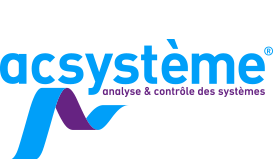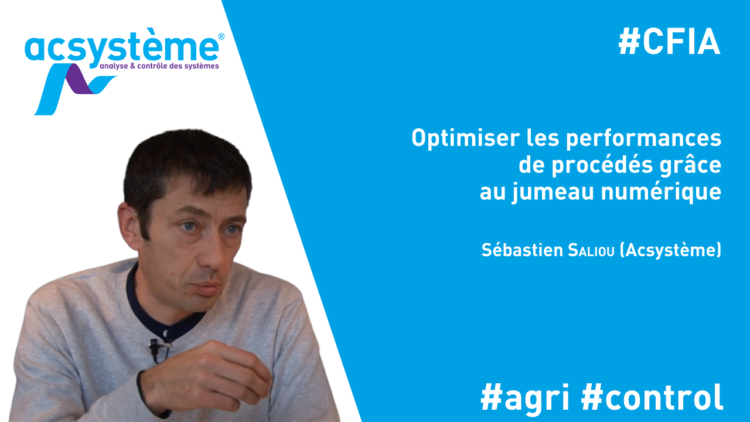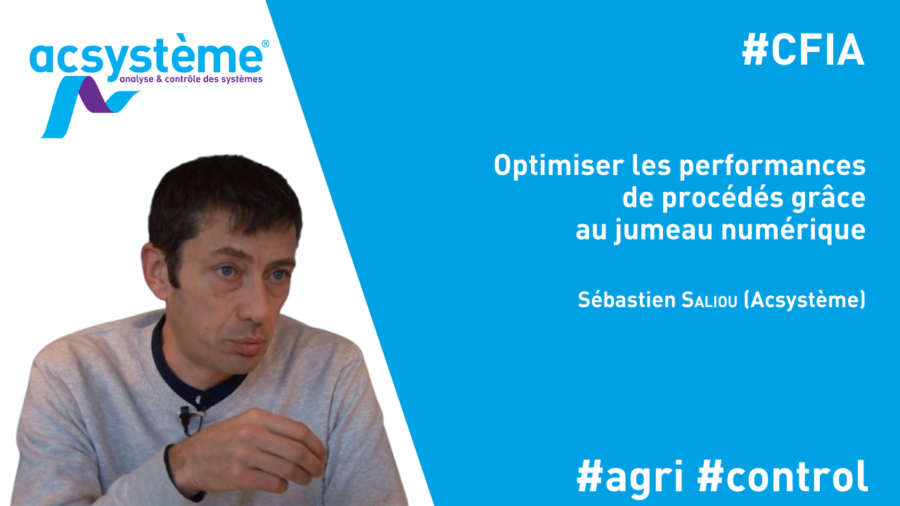– Hello Sébastien, please introduce yourself
Hello, my name is Sébastien Saliou and I am one of the co-founders of Acsystème. Within the company, I am responsible for control activities, and I lead a team of engineers who work in the field of command-control systems and automation. I have over 20 years’ experience in the design of control systems.
– What is the control design approach?
The control design approach, also called MBD (model-based design) is used to design control systems. It involves designing both a model of the control that we will have to develop and a model of the system that we are trying to control. Through these two modelling elements, we can create a simulation environment that allows us to test the control law that we have developed, and to tune it before carrying out tests on the real system. We can then develop a range of tests that enable us to check that the developments are in line with the customer’s expectations.
The MBD approach was introduced by MathWorks, which is a developer of mathematical calculation software, particularly Matlab and Simulink software. Using modelling in Simulink, we can rely on automatic code generation tools. The command-control which it has been possible to test in simulation can then be integrated very simply into the final computer to develop the real system.
Model-based design is a relatively old approach, but one which today offers more and more possibilities. For my part, I have been working on automation and control design for many years and I have always designed models to validate the control algorithms developed on simulation tools, in particular on Simulink, which has already been in existence for more than 20 years.
The features that have been added over the years are both elements that allow automatic code generation, making it easier to move from the model to the real-time target, and also aspects of physical modelling, for which a range of toolboxes is available. They make it possible to develop models easily in the fields of mechanics, electronics, hydraulics, etc.
– What are the two types of modelling approach?
When we perform MBD (model-based design) for the design of control systems, we need to develop both the control model (which will be used to generate the embedded software on the target automatically), and the model of the environment that we are trying to control.
As part of this modelling, we have several modelling approaches:
- white box modelling: this modelling is based on physical equations, where we use simulation software such as Simscape (toolbox associated with Simulink). We can also use tools such as Amesim to perform physical modelling where components and equations have already been developed. It is a model that is created by juxtaposing a certain number of blocks.
- black box modelling: instead of relying on physical equations, we use data measured on the system and extract a model. We can then carry out the identification or learning to extract a model from data measured on the real system.
- grey box modelling: we start the work using physical equations (white box model approach), but on these models we may have some uncertain parameters, and in this context, we use acquisition data to reset and find the numerical value that best matches the behaviour of the system, which has been recorded through a series of acquisitions.
– Concrete case of a manufacturer
Several years ago, we worked for a company that manufactured ammonium nitrate. To manufacture this nitrate, it is necessary to mix gaseous ammonia with nitric acid and then evaporate part of the water in order to concentrate the ammonium nitrate. This was the objective for manufacturing this element, so that it could later be incorporated into fertilisers for agriculture. This is a system where there will be some mixtures to be produced and there will be some equipment in which to store the various chemical components that must be handled: the tanks. The principle of regulation is above all to regulate levels, upwards or downwards, by opening or closing the valves of these tanks.
The aim of the regulation is exactly that: i.e. we have several tanks, and for each tank, we measure the level. By controlling a valve, we are able to increase or reduce the incoming or outgoing flows of these tanks in order to adjust the levels continuously. We have a certain number of tanks which are located in succession. It is a multi-variable system since when a valve is opened, it lowers the level of the tank upstream of this valve, and it increases the level of the tank downstream.
– What was the problem?
The manufacturer’s system tended to oscillate. They observed levels in the tanks which tended to rise and fall in the form of a sinusoidal phenomenon. This behaviour was not suitable for their equipment. These are phenomena that are observed traditionally when carrying out a regulation. If the gains of the regulation have not been correctly calculated, we can observe this pumping phenomenon, of oscillation on the system in question. The purpose of the study is then to improve the behaviour of this system, to analyse the pumping behaviour, and to reproduce it in simulation, followed by the proposal of corrective actions in the command-control and improvement of the overall operation of the system.


